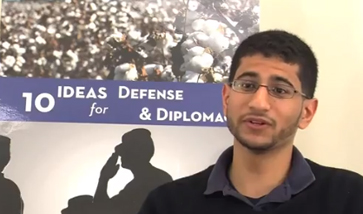From Nation Interns: This Week’s Top Stories (1/26) From Nation Interns: This Week’s Top Stories (1/26)
Every week, interns at The Nation try to cut through the echo chamber and select an important article in their area of interest that they feel deserves more attention.
Jan 26, 2012 / StudentNation / The Nation
Palin, Gingrich, Christie: Three-Way Bully Fight! Palin, Gingrich, Christie: Three-Way Bully Fight!
Meanwhile, Christie tries to slip out the side door on the issue of gay marriage.
Jan 26, 2012 / Leslie Savan
Delaware AG Biden: The Banks Aren’t Scared of Us Delaware AG Biden: The Banks Aren’t Scared of Us
How worried are too-big-to-fail banks over pending investigations into mortgage fraud?
Jan 26, 2012 / George Zornick
An Open Letter to the UC Riverside Chancellor Timothy White An Open Letter to the UC Riverside Chancellor Timothy White
The people beaten and shot at by the UCPD are our students; they are our colleagues. And they are our neighbors. We were all in it together. They are the public, and the public i...
Jan 26, 2012 / StudentNation / Jennifer Doyle
Republicans’ Veterans Exception Republicans’ Veterans Exception
Republicans love social welfare spending when they think the recipients are deserving.
Jan 26, 2012 / Ben Adler

Meet the Roosevelt Institute Campus Network Senior Fellows Meet the Roosevelt Institute Campus Network Senior Fellows
From empowering students to fight back against the school-to-prison pipeline, to finding inspiration for new foreign policy ideas in the Arab Spring, to bringing new voices to th...
Jan 26, 2012 / StudentNation / The Nation
Why Climate Change Will Make You Love Big Government Why Climate Change Will Make You Love Big Government
The coming big storms facing our planet can only be tackled by strong governments.
Jan 26, 2012 / Christian Parenti
Obama’s Faux Populism Sounds Like Bill Clinton Obama’s Faux Populism Sounds Like Bill Clinton
Betrayal by the “good guys” for whom we have ended up voting has become the norm.
Jan 26, 2012 / Robert Scheer
The Occupy Effect The Occupy Effect
It’s too early to tell how Occupy Wall Street will impact the 2012 election, but one thing seems pretty clear: it’s changed the national conversation.
Jan 26, 2012 / Katrina vanden Heuvel
